Research firm Omdia reports that Intel trumps Samsung Electronics to snatch the top position in the global semiconductor market in Q3 2022. - SamMobile
Get Started for FREE
Sign up with Facebook Sign up with X
I don't have a Facebook or a X account

| Tags |
|---|
 Your new post is loading... Your new post is loading...
 Your new post is loading... Your new post is loading...
Richard Platt's insight:
Tesla is recalling more than 321,000 vehicles in the United States because tail lights may intermittently fail to illuminate, the company said in a filing made public Saturday. The news follows the company's recall on Friday of nearly 30,000 Model X cars in the United States over an issue that may cause the front passenger airbag to deploy incorrectly, which sent its shares down almost 3% to a near two-year low. In the filing published Saturday to the National Highway Traffic Safety Administration (NHTSA), the electric vehicle manufacturer said the tail light-related recall covers some 2023 Model 3 and 2020-2023 Model Y vehicles. Tesla has reported 19 U.S. recall campaigns in 2022 covering more than 3.7 million vehicles including four callbacks in November, according to NHTSA data. Tesla said it will deploy an over-the-air update to correct the rear light issue and said it has no reports of any crashes or injuries related to the recall. Tesla said the recall followed customer complaints it became aware of in late October, largely from foreign markets, claiming vehicle tail lights were not illuminating.
Richard Platt's insight:
The British government on Wednesday ordered Chinese-owned technology company Nexperia to sell at least 86% of Britain's biggest microchip factory, Newport Wafer Fab, following a national security assessment. The review of Nexperia's 2021 purchase of Newport Wafer Fab, now known as Nexperia Newport Limited, was announced earlier this year after the legislation came into force in January allowing the government to scrutinize and potentially block acquisitions and investments in sensitive sectors. "We welcome foreign trade and investment that supports growth and jobs. But where we identify a risk to national security we will act decisively," Business Minister Grant Shapps said. The UK government said there was a national security risk related to the technology and know-how which could result from compound semiconductor activities at the site, and the potential for those activities to undermine British capabilities. Nexperia, HQ'd in the Netherlands, said it did not accept the national security concerns raised and that two previous security reviews had found no national security concerns that would give reason to block the acquisition. "We are genuinely shocked. The decision is wrong, and we will appeal to overturn this divestment order," Nexperia's UK country manager, Toni Versluijs, said. "The Secretary of State considers that the final order is necessary and proportionate to mitigate the risk to national security," the order said.
Richard Platt's insight:
One of the original RISC-V designers this week boldly predicted that the open architecture will surpass rival chip architectures in performance. "The prediction is two or three years we'll be surpassing your architectures and available performance, said Krste Asanović, professor of computer science at the University of California, Berkeley. However RISC-V is still a long way from being commercially ready. Until then, Arm has a more reliable hardware and software ecosystem, and toolset that it can provide to customers. RISC-V is not yet a viable go-to market option for high-performance computing, (HPC), said SiPearl CEO Philippe Notton. Commercial IC companies estimated a realistic timeline of closer to +5 years before RISC-V made a meaningful dent in the market. If RISC-V emerges before then, Arm will react and likely do something about it. RISC-V for HPC is “many years away,” said Jeff McVeigh, VP & GM of the Super Compute Group at Intel. "There’s a lot more work to be done to bring RISC-V to HPC beyond designing a chip" .The weaponization of chips by countries and regions has ramped up efforts to create indigenous chips in Europe and China based on RISC-V. The U.S. has banned the export of advanced CPUs and GPUs to China. The U.S has also banned all semiconductor exports to Russia, where companies like Yadro also have RISC-V designs in the works.
Richard Platt's insight:
Temasek Holdings, the Singaporean state holding company, said it will write down its entire US$275 million investment in FTX, becoming the single biggest victim to date in the collapse of the world’s 2nd-largest cryptocurrency exchange, which has so far claimed the fortunes of millions of individual traders and the most established professional investors. “It is apparent from this investment that perhaps our belief in the actions, judgment and leadership of Sam Bankman-Fried, formed from our interactions with him and views expressed in our discussions with others, would appear to have been misplaced,” Temasek wrote in a statement on Thursday, referring to the 30-year-old founder and former chief executive of FTX. Temasek, which put in US$210 million in FTX International and US$65 million in FTX US from October last year to February this year, said it decided to write down its total investment “irrespective of the outcome of FTX’s bankruptcy protection filing”. American and Bahamian authorities have been discussing the possibility of bringing Bankman-Fried to the US for questioning, according to a Bloomberg report.
An SK Group subsidiary will invest $600 million in a new Covington, Georgia, facility.
Richard Platt's insight:
Absolics Inc., a subsidiary of South Korean conglomerate SK Group, has broken ground on a planned $600 million investment in Covington, Georgia, where it will build glass-based semiconductors for the U.S. chip industry. The manufacturing facility will create more than 400 jobs in Georgia and help the U.S. strengthen its supply chain by building a glass substrate-based semiconductor. This technology features a thin layer of glass on which process and memory chips can be mounted together for new processors. The material reduces the space required for a multi-chip package so that more chips can be packed into a single device. The technology is said to be able to significantly increase the performance and energy efficiency of chipsets. SK Group and Absolics originally developed the technology as part of a Georgia Institute of Technology research consortium and claim to be the first in the world to mass produce the material. The inaugural product will be a thin piece of glass about 3 inches X 3 inches and will be used to package different chip components together. Absolics said processing memory and logic chips can be mounted next to each other on the glass to create the core of a computer processor.The glass material replaces both layers of silicon that sit on top of a plastic substrate. This simplifies the manufacturing process and reduces the thickness of the package by nearly half, Absolics said. Multi-layer ceramic capacitors (MLCC) can be embedded into the glass substrate that will free up more space on the surface of chips. Additionally, the glass substrate reduces overall power consumption by up to 50%.
Richard Platt's insight:
Qualcomm, says that the Snapdragon 8 Gen 2 Mobile Platform will define a new standard, engineered with “groundbreaking AI” across the board, and will support two 5G SIMs. Among the OEMs and brands lined up to adopt the platform are ASUS, Honor, iQOO, Motorola, nubia, OnePlus, OPPO, Redmagic, Redmi, Sharp, Sony, vivo, Xiaomi, XINGJI/MEIZU and ZTE. The first commercial devices are expected by the end of 2022. One of the key features is Snapdragon Smart, fueled by an upgraded Hexagon processor, where users can experience faster natural language processing with multi-language translation and advanced AI camera features. The Snapdragon Sight platform “defines a new era of professional quality camera experiences,” the company said. Snapdragon 8 Gen 2 “automatically enhances photos and videos in real time with semantic segmentation,” which uses an AI neural network to make the camera contextually aware of faces, facial features, hair, clothes, skies and more – and optimize them individually so every detail receives customized professional image tuning, according to Qualcomm. New gaming features are supported in Snapdragon 8 Gen 2, including real time hardware-accelerated ray tracing that delivers “life-like light, reflections and illuminations to mobile games,” the company said. The upgraded Qualcomm Adreno GPU promises up to 25% faster performance and the Qualcomm Kryo CPU enables up to 40% more power efficiency, so users can enjoy longer battery life.
The company’s fourth plant is expected to employ about 700 people by 2025.
Richard Platt's insight:
First Solar announced November 16 that it would spend $1.1 billion building a new solar panel manufacturing plant in Lawrence County ALabama. This is First Solar’s fourth plant and its first outside of Ohio, is expected to employ ~700 people, produce 3.5 gigawatts DC of capacity/year, and come online by the middle of the decade. In August, First Solar said it would spend $185 million expanding its production operations in Northwest Ohio, and in October it said it would spend $270 million on increasing its R&D operations in the same area. In total, First Solar says, the latest investments should bring the company’s total employment to about 3,000, which it says makes it a contender for largest employer in U.S. solar panel manufacturing.
Richard Platt's insight:
This is part of the story of how Samsung came to become the largest and most dominant of the South Korean Cheabols, and that it, along with the other Cheabols essentially run the country and what has led to their dominance in the global market...A very informative expose on Samsung's power and how they use it.
Eliyan, a startup developing chiplet interconnect technologies, raised $40 million in a round that had participation from Intel and Micron.
Richard Platt's insight:
Increasingly, as Moore’s law rears its ugly head, computer chip developers are adopting “chiplet” architectures to scale their hardware’s processing power. Chiplets are Lego-like integrated circuit blocks designed to work with other, similar chiplets to form complex, stackable chips that boost performance while maintaining a similar physical footprint. Chiplets offer a number of advantages over conventional designs. But assembly issues — as well as challenges in balancing cost, performance, power consumption and time to market — often plague them in the early phases. Aiming to overcome the hurdles in chiplet creation, Ramin Fajadrad, Syrus Ziai and Patrick Soheili founded Eliyan, a chiplet interconnect startup, in 2021. Eliyan’s technology — dubbed NuLink — connects chiplet components using standard chip packaging, leading to what the company claims are faster-performing and more energy-efficient chips. “The focus is on developing a way to enable a more high-performance, lower-power and lower-latency interconnect for chiplet architectures, which experts agree is the only path to continuing to scale Moore’s law,” Farjadrad told TechCrunch in an email interview. “We use our technology in standard packaging, thus saving time, cost and development effort compared to more advanced packing that other interconnect schemes require. In addition, our approach has sustainability benefits by reducing material costs and waste in the manufacturing process and lowering energy consumption for high-performance compute chips.” Eliyan’s roots are in a previous startup, Aquantia, that Marvell acquired in 2019. Farjadrad says the technology has been under development since 2017; he co-started Aquantia and served as the startup’s chief engineer for nearly 15 years. Prior to co-founding Eliyan, Farjadrad spent several years at Marvell as CTO and VP of the company’s networking and automotive division. Ziai is a former Qualcomm engineering VP, while Soheili was previously VP of business development at semiconductor firm eSilicon. While Eliyan hasn’t launched its technology commercially yet — it expects the first silicon to hit the market in Q2 2023 — the company claims to have achieved the last step before manufacturing, a tape-out, using semiconductor manufacturer TSMC’s 5 nm process. “Process” in chip lingo refers to an architectural platform; TSMC began mass-producing 5 nm chips in 2020. “Eliyan’s technology enables processors by allowing them to scale in performance and power to be more readily and practically manufacturable,” Farjadrad said. “The world will always need more computing power, and Eliyan is enabling a critical aspect of making sure scaling will happen for any type of high-performance computing application.” The fact that Eliyan’s tech has yet to reach market might give some would-be customers pause. But the startup has notable investors in the chip world behind it, including Intel and Micron, who alongside Cerberus, Tracker Capital and Celesta Capital contributed to Eliyan’s $40 million Series A tranche that closed today.
Richard Platt's insight:
Researchers at leading foundry TSMC are developing transistors with feature sizes below 1nm to scale chip designs even further and have shown the first nanosheet transistor with a gate all around (GAA) topology A strand at the coming IEDM device conference in December is looking at the development of 2D transistors using different materials. The conference, now celebrating 75 years, is an important view of the roadmap for scaling transistor device technology. The researchers at TSMC have been working with layers of transition metal dichalcogenides (TMDs) such as MoS2 that are just one atom thick. A key challenge of these materials is that it’s quite difficult to deposit pinhole-free dielectric layers, or insulators, onto them. That makes it difficult to incorporate them into the stack of materials which forms a transistor gate. The team has integrated hafnium-based dielectrics formed by atomic layer deposition with the monolayer TMD material MoS2, to build a top-gated nFET with a physical dielectric thickness of 3.4 nm and an electrically equivalent oxide thickness (EOT) of ~1 nm. Another team at TSMC has also developed the first 2D nanosheet transistor with a gate all around (GAA) architecture. Nanosheet GAA devices are considered the most promising candidate for next-generation device architectures because they offer improved electrostatic control, relatively high drive current and the feasibility of implementing devices with variable widths. Currently, gate-length scaling and high electrostatic control come from thinning down the Si channel, but in the future extreme gate-length scaling could be enabled by using monolayer TMDs. While silicon nanosheets integrated with monolayer TMD as the channel material are promising, both the performance of such devices and their potential fabrication processes still need to be explored. The team built the first-ever monolayer MoS2 nanosheet FET in a GAA configuration. With a gate length of 40nm, the transistor exhibited a current density of ~410 µA/µm at 1V, achieved with a monolayer channel that was ~0.7 nm thick. The researchers say higher drive current can be achieved by stacking multiple channel layers. Low-resistance metal contacts to 2D materials are a bottleneck for these transistors. While progress has been made with n-type contacts for use with nFETs, but low-resistance p-type contacts for use with pFETs are more challenging because of the electro-thermodynamic A TSMC-led team conducted computational computer modeling and simulation studies to investigate various materials for use as p-type contacts to the 2D material WSe2. These include metallic contacts using a material like 1T-TiS2, and bulk semimetallic contacts using various materials, of which Co3Sn2S2 was identified as exceptionally good, with a theoretical contact resistance as low as 20 Ω·μm.
Find out why IBM Two-Nanometer Chip is one of the best inventions of 2022
Richard Platt's insight:
IBM’s 2-nanometer (nm) chip technology puts 50 billion transistors, each the size of roughly five atoms, on a space no bigger than your fingernail. The landmark technology—the smallest, most powerful microchip ever developed—could quadruple the life of cell-phone batteries and slash the carbon footprint of data centers, among other things. Now the manufacturing competition is on. Samsung and the TSMC have announced plans to produce the chip by 2025, and in August, the U.S. and Japan unveiled a plan to build a joint research center focused on 2-nm tech.
Richard Platt's insight:
AMD' has managed to pull out ahead of rival Intel with the launch of its 4th-gen Epyc "Genoa" processors this week. The latest evolution of AMD's server platform boosts core counts to 96 and clock speeds as high as 4.4GHz, and beats Intel's Sapphire Rapids to market as the first x86 CPU in the datacenter with support for the DDR5, PCIe 5.0, and Compute Express Link (CXL) standards. The CPUs are based on the same Zen 4 microarchitecture and TSMC 5nm process nodes we saw in AMD's Ryzen 7000-series desktop chips earlier this year contributing to a 14% instruction per clock (IPC) improvement over Zen 3. The IPC gains are only part of the story. Combined with higher core counts and clock speeds, the 96 core Epyc 4 CPUs are 2X as fast as 2021's 64-core Milan parts in a variety of cloud, high-performance compute (HPC), and enterprise benchmarks. As usual we recommend taking these claims with a healthy grain of salt. More cores, means higher power consumption Under Genoa's now even larger heat spreader reveals many cores into a single package. You guessed it, more chiplets. The larger package makes room for 4 additional Core Complex Dies (CCDs), bringing the total to 12. The actual core layout of these chiplets, however, remains largely unchanged from Milan, with 8 cores sharing 32MB of L3 cache between them. What is new is the move from TSMC's 7nm to its more advanced 5nm process and the use AMD's Zen 4 cores, which doubles the L2 cache to 1MB per core. AMD also juiced the clock speeds of the chips by several hundred megahertz across the board, albeit apparently at the expense of higher thermals. Default thermal design power (TDP) core-for-core hasn't changed too much from last generation — hovering around 280W for AMD's 64-core parts — but now customers that want to extract the highest frequencies possible from these chips can now configure them up to 400W. That's 120W increase in power consumption compared to Milan. |
Richard Platt's insight:
Intel said Tuesday it has reduced potential stock payouts for CEO Pat Gelsinger after fielding complaints from investors. The cuts come as employees are bracing for layoffs across the company, part of a broader plan to reduce corporate spending. The compensation changes reflect a desire “to further strengthen the alignment of Mr. Gelsinger’s new hire performance-based equity awards with his commitment to long-term stockholder value creation,” Intel said in a regulatory filing Tuesday. Intel has acknowledged that investors were unhappy with Gelsinger’s outsized potential payouts, noting earlier this year that “some stockholders sought to understand the need for the magnitude of the CEO’s new-hire equity awards.” Intel said it had revised Gelsinger’s new-hire payouts to make them more difficult to achieve. For example, to receive some performance-based stock options the company’s share price must increase to $74.47 instead of $64.54, as originally required. And the stock must stay above that higher threshold for 90 consecutive days, instead of 30 days. Intel said it is making other reforms to its executive pay practices “after careful review and deliberation of the feedback Intel received from its stockholders during extensive engagement regarding the company’s core compensation programs and disclosures.” Intel said Tuesday it will limit cash bonuses, require performance payouts be based on multiple years of strong performance and won’t use stock price as the sole basis for future hiring bonuses, among other changes. Investors have fled Intel in part because of the exorbitant cost of Gelsinger’s turnaround plan. He has committed to spend $60 billion building new factories in Arizona, Ohio and Europe, and billions more to revive Intel’s engineering capabilities. Even as Intel embarks on a building binge, the company’s sales are in steep decline because of reduced demand for PCs and intense competition from rival chipmakers. Intel has begun laying off staff as part of a plan to save $3 billion next year, and billions more in future years.
Richard Platt's insight:
Twitter account (@capitolhunters) has done a deep dive on Elon Musk. Capitol Hunters is a crowd-sourced, investigative account that has done tremendous work tracking down participants in the Jan. 6th coup attempt. Thye were very successful in this and, thanks to them, many people who would have otherwise escaped notice were eventually charged. This latest thread of theirs is nothing short of incendiary. Explosive. Nuclear, even. They’ve done a deep dive into public records, lawsuit filings, interviews, and other assorted documents and come to the conclusion that: Elon Musk has lied about having a physics degree and has, at most, a (likely paid for) undergrad degree in economics from Wharton Business school (Trump and Trump, Jr.’s alma mater) He illegally overstayed his visa when he sold his first company He has been consistently lying, obfuscating, and covering up these details for quite some time
Ford CEO Jim Farley (Finally) Admits Auto Industry Made Major Mistakes That Led To The Chip Shortage
Richard Platt's insight:
Ford has struggled to match supply with overwhelming demand for virtually its entire lineup for well over a year now, a situation that has essentially become a long term issue for the company, and for the entire Automotive industry as well. Unfortunately, the supply chain crisis has no end in sight, as Ford CEO Jim Farley has stopped predicting when things might return to some semblance of normalcy. Additionally, he recently took the time to detail why the company failed to secure enough chips to sustain its manufacturing operations. Speaking at the 2022 Semiconductor Industry Association dinner, Farley said that the crux of the matter is (and was) a lack of communication between the automaker and the companies that manufacture the chips that Ford desperately needs. “It’s too painful. We need to understand your technology roadmap better,” he said. “And we need supply chain people from your companies and our companies to get it right.” At issue are the older chips that are responsible for simple tasks like operating the windshield wiper system in a vehicle. An inadequate supply of metal-oxide-semiconductor field-effect transistor (MOSFET) chips for the Ford F-150 resulted in the company losing out on 40,000 units of production. Additionally, the shortage has cost Ford 1.3 million vehicles since the start of the shortage. Unfortunately, the industry is less interested in producing legacy chips, as they bring less profits, which has led to a slower ramp up in production capacity. Farley said that the company failed to appreciate where the semiconductor industry was heading. Currently, Ford has a sizable number of “vehicles on wheels” currently sitting at various lots waiting for chips and other parts, although it expects to deliver those vehicles to dealers by the end of the fourth quarter. Ford CFO John Lawler has said that the shortage will continue through 2023.
Richard Platt's insight:
China’s integrated circuit (IC) output in October contracted by 26.7% from 2021, marking the biggest monthly decline on record for the domestic semiconductor industry, amid weak demand that mirrored the country’s 1st export growth decrease in +2 years. Production of ICs last month, totallng 22.5 billion units, showed a larger percentage drop in volume compared to the 24.7% slump in August, according to data released by the National Bureau of Statistics (NBS). This fall in monthly semiconductor production echoed the state of factory activity across the country because of weak demand, as the official manufacturing purchasing managers’ index fell to 49.2 in October, from 50.1 in September, according to NBS data. The 50-mark separates growth from contraction on a monthly basis. SMIC, mainland China’s top contract IC maker, warned that weaker demand for consumer electronics products is expected to weigh on its business outlook through the first half of 2023. China’s chip imports shrank by 13.2% to 458 billion units in the first 10 months of 2022, down from the 527.9 billion in the same period in 2021, according to data released by the General Administration of Customs last week.
Richard Platt's insight:
Meta in a bid to make Facebook easier to navigate and use will be removing several fields from users' profiles starting next month. From December 1, Facebook profiles will no longer highlight a user's religious views, their political views, their sexual orientation ("interested in") and addresses. In an e-mail to the tech site confirming the pending changes, a Facebook spokesperson said they are sending notifications to users that have the fields populated. The Facebook rep further noted that there is nothing stopping a user from sharing information related to these fields elsewhere on the platform. The changes are a sign of the times and probably long overdue. When the social network launched in the mid-2000s, online privacy was not nearly as big of a concern as it is today. The Internet overall was far tamer back then as well, as online bullying and harassment had not matured to modern levels. Other popular social platforms including TikTok and Instagram allow users to share some details about themselves but don't get overly specific with the particulars.
Richard Platt's insight:
Elon Musk gave Twitter employees an ultimatum in a midnight email: commit to a “hardcore” culture at Twitter or leave with severance. The Washington Post reports that Musk has asked Twitter employees to sign an online form by 5PM ET on Thursday committing to “long hours at high intensity.” If Twitter employees refuse to sign the form then they will reportedly receive three months of severance pay. Former Uber engineer Gergely Orosz, who has been reporting on Twitter’s internal changes this week, says Musk’s email outlines a “Twitter 2.0” that will be driven by engineers with “those writing great code” taking a more important role inside the company. The email arrived barely a week after Musk’s first meeting with Twitter employees, and two weeks after he ordered mass layoffs — cutting roughly half of Twitter’s global workforce. “What works at SpaceX and Tesla is people being in the office and being hardcore,” said Musk during his first meeting with Twitter employees following the cuts. That language was mirrored in the email to Twitter employees today, with Musk demanding that employees “will need to be extremely hardcore.” Musk has previously asked Tesla workers to “go super hardcore” to meet targets.
Richard Platt's insight:
Micron shares dropped 7% Wednesday on the company’s warning it will reduce wafer production for DRAM and NAND memory by about 20% compared to its fourth fiscal quarter of 2022. - CEO Mehrotra described “bold and aggressive steps” to limit inventory amid shrinking demand The company said in a statement the market outlook for 2023 has weakened, with negative growth for DRAM and single digit growth for DRAM. Adding, “an unprecedented confluence of macro events and customer inventory adjustments are depressing demand for DRAM and NAND to well below end consumption.” Analysts and economists have widely predicted a correction in the chip market through 2023. Their thinking is based on a reduction in chip demand for computers and servers because many customers, including consumers and data centers, bought up electronics at high levels during the pandemic and have filled that earlier demand. Meanwhile, some OEMs have greatly slowed purchases even as chipmakers had ramped production in 2021 and 2022.
Richard Platt's insight:
Tower Semiconductor’s acquisition by Intel is being held up by China’s regulatory agency. China’s move to self-sufficiency in chip production has been stymied by expanding sanctions by the U.S. government.
Richard Platt's insight:
MediaTek has augmented its Pentonic series of silicon custom-designed for TVs with a new chip. The 1000 improves on the up-to-date specs of its 700 sibling with an auto-low latency mode (ALLM) as well as specs such as variable refresh rate (VRR) technology at up to 4K/144Hz for gaming. Then again, the 1000 seems to lack the "Wi-Fi 7-readiness" of the 700, preferring to go with 6/6E support instead. Nevertheless, MediaTek asserts that it will deliver a flagship-grade experience OEMs might aim for in their next premium 4K TV with on-board demodulation for a global range of broadcast standards. It will be found alongside the Pentonic 1000's quad-ARM Cortex-A73 CPU and dual-core Mali-G57 MC2 GPU, clocked at 2GHz and 800MHz respectively. It has an APU for MediaTek's deep learning acceleration (DLA) that delivers features such as AI-Super Resolution 2.0 and AI-Picture Quality Object Recognition 3.0. The Pentonic 1000 also packs cutting-edge features such as Dolby Vision IQ with Precision Detail, Dolby Atmos 2.6 and the MediaTek Intelligent View technology necessary to split a screen into up to 8 individual windows for different sources or video-conferencing feeds. MediaTek estimates that the first TV to ship with the Pentonic 1000 will be on the market in Q1 of 2023
Richard Platt's insight:
US gaming and computer graphics giant Nvidia has been expanding its R&D operations in Israel and recently established two engineering units to develop software and hardware solutions for Nvidia’s autonomous driving programs. Nvidia set up a hardware development group, SoC Group, to work on a system-on-chip for self-driving vehicles and a second team, SW AV Group, to develop software as part of Nvidia’s Drive platform for autonomous vehicles. Nvidia Drive solutions are being incorporated into future autonomous vehicle models to be rolled out by automakers like Volvo, Chinese electric vehicle manufacturer NIO, Mercedes-Benz, and Jaguar Land Rover. Both groups will focus on autonomous vehicles’ planning and decision-making processes. Both Nvidia and Intel have R&D centers in Israel and compete for the same pool of talent. Nvidia’s autonomous vehicles department is led by Rotem Aviv, the company’s Israeli-born, California-based Director of Engineering, Autonomous Vehicle Software, who heads a global team with dozens of workers in the US, Europe, China, and now Israel, the company said. Nvidia currently employs +3,000 workers in 7 R&D centers across Israel and earlier this year announced the addition of another 1,000 engineers to existing teams. The new hires will support Nvidia’s R&D products and services being developed in Israel, including high-speed networking and HPC (high-performance computing) technologies, DPU (data processing units) design, artificial intelligence research, and software architecture. Much of Nvidia’s R&D engine in Israel rests on teams acquired by the semiconductor giant through its 2020 purchase of Israel’s Mellanox Technologies Ltd., a maker of high-speed servers and storage switching solutions used in supercomputers globally, for a massive $7 billion. The acquisition added about 2,000 employees to Nvidia’s R&D activities in Israel, its largest outside of the US. The R&D locations include Yokne’am, the headquarters of Mellanox, Tel Aviv, Jerusalem, Ra’anana, and Beersheba. Earlier this year, Nvidia also established a new design and engineering group in Israel that is leading the development of next-generation CPUs (central processing units) geared toward artificial intelligence, robotics, autonomous vehicles, and Nvidia’s new platform Omniverse, which allows for virtual world simulations. Alongside its R&D operations, Nvidia also runs the Nvidia Inception Program for Startups, an accelerator that works with hundreds of early-stage companies, including 600 Israeli startups, and the Nvidia Developer Program, which allows free access to Nvidia’s offerings for developers. Nvidia has a market cap of about $356 billion (as of November 2022), compared to $117 billion (also as of November 2022) for competitor Intel Corp., and has replaced the latter as the largest US chipmaker, and the second largest in the world, after Taiwan’s TSMC. Intel’s autonomous driving subsidiary, Jerusalem-based Mobileye, is a world leader in the self-driving systems space with the largest fleet of autonomous vehicles in testing across the globe. Mobileye, acquired by Intel in 2017 for $15.3 billion, received a warm Wall Street welcome late last month. Intel also took a step toward bolstering its semiconductor capabilities earlier this year with the intended acquisition of Israel’s Tower Semiconductor for $5.4 billion. The move adds to Intel’s previous acquisition, in 2019, of Israeli company Habana Labs in a bid to boost its artificial intelligence capabilities and strengthen its portfolio of AI-based accelerators for the cloud and data centers, spaces dominated by Nvidia.Amid a sustained market downturn this year and plummeting revenue in the third quarter of 2022, Intel announced mass layoffs and spending cuts of some $3 billion annually starting next year. Nvidia said in August that there were no planned job cuts just yet.
Richard Platt's insight:
Every year for over two decades, TIME editors have highlighted the 100 most impactful new products and ideas. This year, in a rapidly shifting world, innovation boomed. So in 2022, for the first time ever, we selected the year’s 200 Best Inventions. To compile the list, we solicited nominations from TIME’s editors and correspondents around the world, and through an online application process, paying special attention to growing fields—such as the electric vehicle industry, green energy, and the metaverse. We then evaluated each contender on a number of key factors, including originality, efficacy, ambition, and impact. The result is a list of 200 groundbreaking inventions (and 50 special mention inventions)—including life-mapping artificial intelligence, diamonds made from excess carbon in the air, and the most powerful telescope ever—that are changing how we live, work, play, and think about what’s possible.
Richard Platt's insight:
Another fantastic in-depth analysis from Dylan Patil over at Semianalyis....The 4th generation Epyc Genoa launch marks the 3rd consecutive generation where AMD beats Intel in the majority performance metrics. Rome and Milan made the cloud players start buying a lot of AMD, and Genoa is when the volumes jump across most remaining markets and end users. SemiAnalysis believes the gap between Genoa and Sapphire Rapids is larger than the gap between Milan and Ice Lake. This gap will only continue widening until late 2024, but probably in 2025 with Sierra Forrest and Granite Rapids. The summary is that AMD’s Genoa is ~2x the performance of Milan, with only a modest power consumption increase. Gains are larger in floating point thanks to the addition of AVX512 and the outsized memory bandwidth bump. There are no major surprises with the specs. 96 cores, 12 channels of DDR5, and 160 PCIe Gen 5 lanes (64 of which are CXL capable). The CXL-attached memory encryption is critical to security in multi-tenant cloud architectures. We detailed these features in the past here. No support is required from the CXL memory ASIC/device to support encryption, and this is not dependent on any specific ASIC. The heart of Genoa is the Zen 4 core. Performance is up massively with a 14% improvement in IPC, and markedly higher frequency and average latency is improved due to the 2x larger L2 size. When we pixel count the image on the right which says its only for illustrative purposes, Front End accounts for 40% of the IPC improvement, Load/Store improvements account for 24%, Branch Prediction accounts for 20%, and L2 Cache/Execution engine are 8% each. |



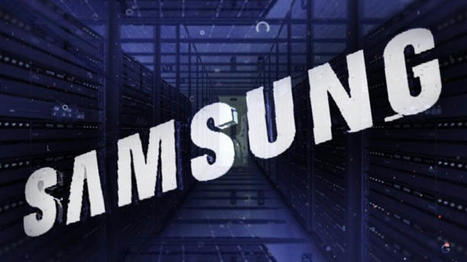

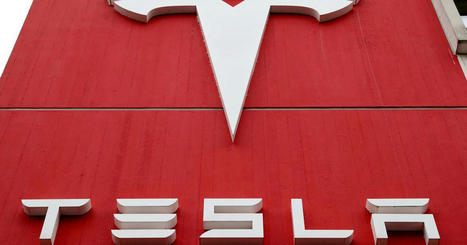
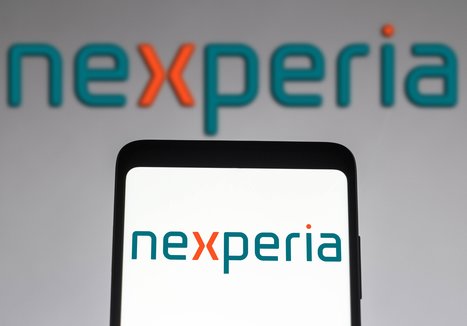
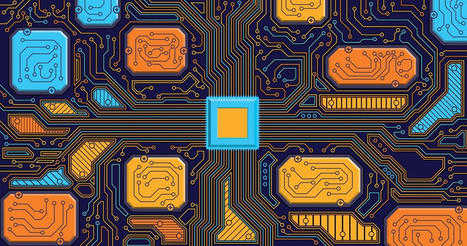
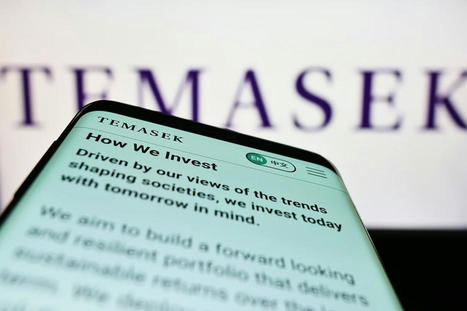

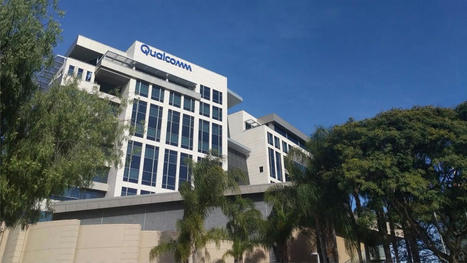
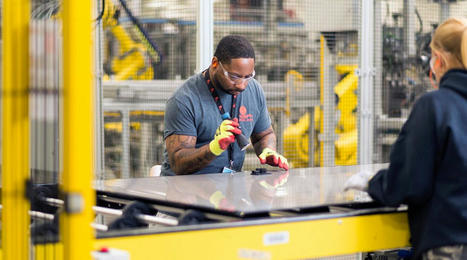
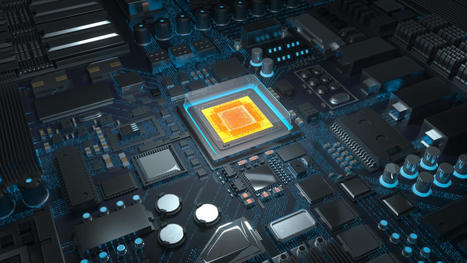
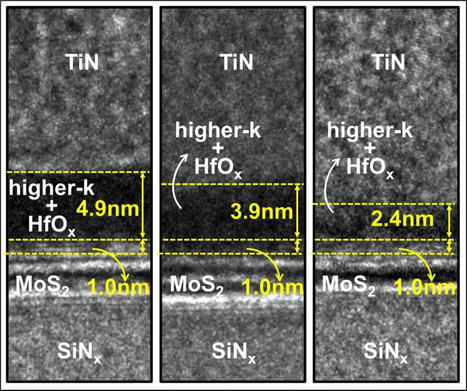
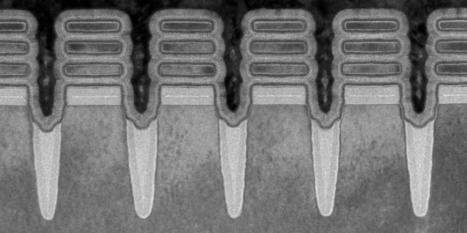
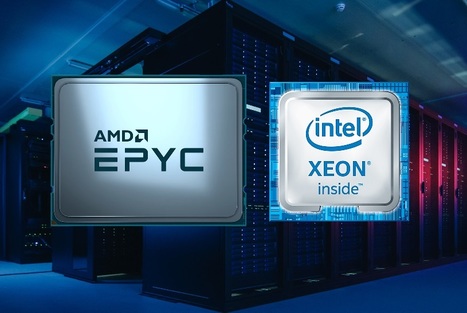


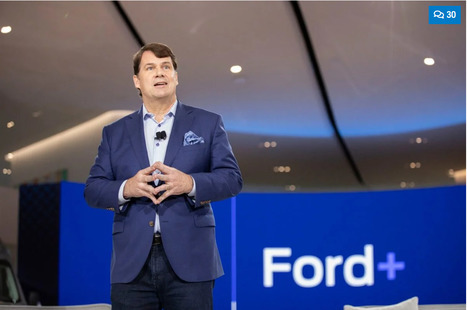
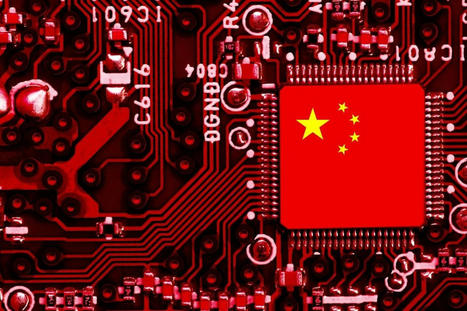


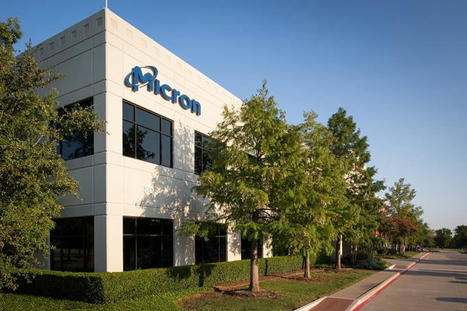

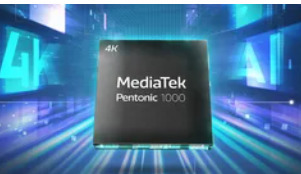


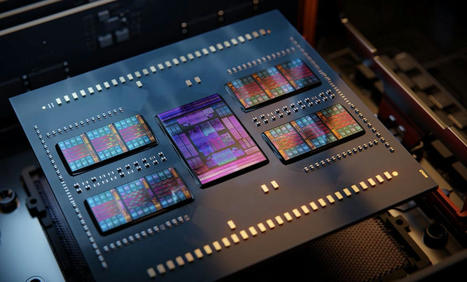





Bad news for Samsung as its top position in the global semiconductor market has been taken over by Intel. This is the result of the contraction the semiconductor market suffered in Q3 2022, as per Business Korea. Market research firm Omdia studied the global semiconductor market performance and reported that the market in Q3 2022 stood at $147 billion, which is down by 7% from $158 billion in Q2 2022. While the semiconductor market saw a gradual expansion for 2 years since 2020, the COVID-19 pandemic but did not do well for the industry. COVID-19 brought increased demand for electronic and IT products, shrinking the global semiconductor market. The main cause of this sluggish performance of the semiconductor market was the weakness of the memory market. said Omdia, “the memory market saw profits decrease by 27% compared to the previous quarter due to customers’ inventory adjustments and a decrease in demand for chips from data centers, PCs, and mobile devices.” This hit Samsung Electronics, SK Hynix, and Micron Technology pretty hard, all recording a decline of +$10 billion in revenue in Q3 '22. Samsung’s sales dipped in Q3 by 28.1% from Q2 to only $14.6 billion. It lagged behind Intel, which posted $14.9 billion in sales. Amid the downfall, Samsung reportedly plans to launch a new in-house global research organization under the Device Solutions Business Division in December. This research division will be tasked with analyzing the global semiconductor market and also discovering new investment avenues. Samsung has several research organizations, these groups are tasked with analyzing different fields but has a distrust in external sources, wanting to take a closer look at the global semiconductor space through an in-house research division rather than relying on outside sources. Its new division will reportedly. Qualcomm was ranked 3rd and posted a 5.6% increase in Q3 as compared to Q2 '22. SK Hynix dropped from 3rd to 4th place as sales dropped by more than 26%. Micron replaced Broadcom in the 6th position, as sales fell by +27%.